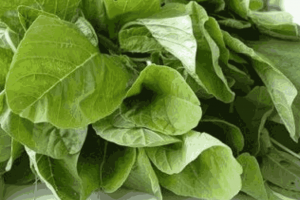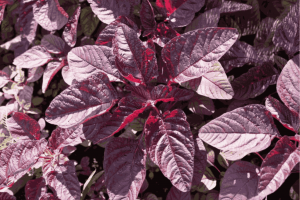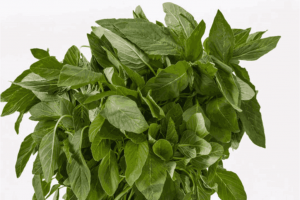How to Grow Amaranthus from Seed to Harvest
Greens are a very important part of a balanced diet. It is an important vegetable grown in summer and monsoon season. It is rich in proteins, salts, calcium, iron, vitamin ‘A’ and ‘C’.

Amaranthus called with different names in other Indian languages: Chaulai Sag, Mullu Keerai, Cheera, ainthan, Thotakura, Amaranthus, mulaikkira, Amaranth
Current Problems in Cultivation:
Lack of high yielding varieties suitable for different regions.
Ways to increase yield:
- The area should be increased as a dry season crop
- Short duration of breeding, high yielding varieties.
- Constancy to best management practices
- Comprehensive fertilizers and plant protection measures should be taken
Varieties suitable for different regions:
Co-1, Co-2, Co-3, Co-4, Co-5, Pusa Chotti Chelai, Pusabadi Chowlai, Pusakirthi, Pusa Kiran, Pusaalal Chowlai, R.N.A. – 1, Sirikura, Arka Suguna.

Characteristics of Varieties:
100 grams of seeds Contains approximately 14000k seeds
Amaranthus Seed Germination time is 3 to 5 Days
RNA – 1: This species belongs to the genus Amaranthus tricolor. This variety was released from Vegetable Research Station, Sri Konda Laxman Telangana State Horticultural University. Leaves and stems are pale green.
This variety is high in vitamin ‘A’ and ‘C’ and the stems are also very soft and tasty. Yields up to 6.7 tones per acre in a month. The first harvest comes 15-20 days after sowing. Branches expand well after cutting. Suitable for Kharif and Summer cultivation in all regions of Telangana.
Co-1: This variety belongs to the genus Amaranthus dubius. Leaves and stems are fat and fleshy. It gives a yield of 3-3.5 tones per acre in 25 days. The leaves are broad and dark green and the seeds are small and black. It is Released by Tamil Nadu Agricultural University.
Co-2: This species belongs to the genus Amaranthus tricolor. The leaves are long and dark green in color and the stem is tender and soft. Can be harvested 30 days after sowing. The stem can also be used as a curry. It can yield up to 4-5 tons per acre. The seeds are large and black. It is Released by Tamil Nadu Agricultural University.
Co-3: This is a harvesting type. It is belongs to the genus “Amaranthus Tristin”. Harvesting begins 25 days after sowing and up to 10 crops can be harvested in a week-long period. Leaf yield is 4-5 tonnes per acre.
Co-4: It can be harvested for leaf and seed. It belongs to the genus “Amaranthus hypochondriacus”. Plants are short and grows very quickly. It can be harvested in 20-25 days after sowing. The plants should be thinned to a distance of 30×30 cm and left for seeds. Seed yield is 0.8-1.0 tonnes per acre in 80-90 days.
Co-5: This type has two types of leaves (green and pink). The leaves are bushy at the end of the stem. First crop can be taken 25 to 55 days after sowing. The yield is up to 16 tons per acre.
Pusa Choti Chaulai: It belongs to the species ‘Amaranthus Bytum’. Released by Indian Agricultural Research Institute, New Delhi. Plants are short and leaves are small.
Pusa Badi Chaulai: Also issued by “Indian Agricultural Research Institute”, New Delhi. It belongs to the genus ‘Amaranthus Color’. The plants are tall, the stems are fat and tender, and the leaves are large.
Pusakirthi: This variety is also released by ‘Indian Agricultural Research Institute, New Delhi’. The leaves are green and ‘egg’ shaped. Harvesting starts from 30-35 days after sowing and can be extended up to 70-85 days. A very good variety especially for dry season (March-June). The yield is up to 22 tons per acre.
Pusa Kiran: Type released by I.A.R.I., New Delhi. Amaranthus tricolor X Amaranthus tristis is a variety selected and developed from plants obtained from hybrids. The leaves are egg-shaped and large and shiny. The stem : leaf ratio is 1 : 4.6. Harvesting starts at 21-25 days and can be extended up to 70-75 days and 90-100 days to flowering. Yield 14 tons per acre.
Pusa Lal Chowlai: It belongs to the red asparagus variety and Published by IARI, New Delhi. Amaranthus belongs to the genus Tricolor. The upper part of the leaves is dark red and the lower part is bluish red. First harvest occurs 24 to 33 days after sowing. Later cuttings can be taken four times at an interval of 8-10 days. Average yield is 2-2.5 tones per acre.
Arka Suguna: This variety produces large green leaves. A variety suitable for multiple harvests. The first harvest comes in 15 days after sowing. After that cuttings can be taken every 10-15 days (up to 90 days). It is somewhat resistant to white rust rot. Yields 10 tons per acre.
Sirikura: It belongs to the genus Amaranthus polygonoidon. The plants are short and leaves are small. The junction of the stem and the root is pink in color. After 25 days of planting, tender plants along with stem can be used as curry.
Weather:
Temperature of 20-30° centigrade is good for plant growth. Mainly this crop can be divided into leaf and seed crops. Varieties grown for foliage are cultivated in the tropics in the plains. Seed varieties are grown in temperate and tropical regions.
Soils:
Can be grown in all types of soils, but sandy soils are suitable. Heavy alluvial soils are not so good. Waterlogged soils are not suitable for rabi cultivation. Cultivation is suitable in Soils with a Soil PH levels 5.5–7.5 are suitable.
Planting Season:
Cultivated in all seasons. Growth is less in winter.
Rainy Season : June – October
Summer season : January – May
Seed Per Acre:
Seed Rate: 800 grams of seed per acre is sufficient.
Harvesting: 25 days after sowing
Yield: 3-4 tones/acre
Water management:
Water should be given immediately after sowing and water again on the 3rd day. Watering should be given at intervals of 7-10 days depending on soil moisture. In summer, watering should be given every 5-6 days. When watering for the first time, water should be added slowly.
Harvesting and yield:
Varieties like Co-1 and Co-2 should be harvested and sold in bundles with roots 25 days after sowing.
Amaranthus yield up to 3-4 tones per acre.

